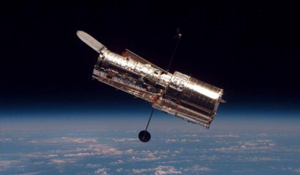
There’s a misconception about astronomy, and it’s to do with the telescopes. Tell someone that you’ve got a degree in astrophysics and they’ll likely start asking questions about all your romantic late nights training telescopes to the skies, unlocking the mysteries of the universe, one star at a time. The Arecibo Dish, Mauna Kea, Chile’s desert-based and imaginatively named Very Large Telescope; they all lend astronomy a dramatic figure – late nights, just you and the universe.That’s not quite the truth.
Only the most masterful astrophysicists have any say in the operation of the most magnificent telescopes, although it’s true that anyone can do science in their back garden with smaller scale set up. Now the internet lets anyone flex their astronomer’s muscles online, applying their brain to help professional scientists analyze images from some of the world’s cutting edge telescopes. It’s called Zooniverse, a collection of astronomical citizen science projects which facilitates anyone with an internet connection and a computer to increase our understanding of galaxies, the Sun, Moon, supernovae, nebulae, and even exoplanets.
I start off with analyzing merging galaxies, million of stars flowing together, interacting gravitationally to form new shapes. When two spiral galaxies like our own Milky Way come together, it’s thought to result in a elliptical galaxy – a spheroid ball of stars. By picking the computer-modelled merger which best matches pictures of an actual galaxy merger, I can help astronomers refine their models.The website itself is simple, but works seamlessly. You need to make an account, but it takes 15 seconds with an email address and password. There’s no email confirmation, so you’re free to go straight to the science after sign up. Each project comes with a tutorial explaining how to use the application, or you can just dive right in. For instance, the Planet Hunters project gets you classifying light curves right away, but there is a tutorial available. (A light curve is a measurement of the light emitted by stars as their brightness varies, either due to planets or other stars crossing the stellar face, or natural variability ). Beyond just the satisfaction of contributing, you can also track your progress – how many stars you have classified, how many potential planets you’ve found.
I’m pretty excited about trying a project called “Search for exploding stars”. I’ll be finding candidate supernovas in sky surveys taken by the Palomar Observatory in California, candidates which astronomers may then follow up. But there’s a problem, the 640,000 people taking part in Zooniverse projects worldwide have polished off the Palomar data – all the supernova candidates have been found. Zooniverse informs me of this with a pop-up, and suggests I try “Solar Stormwatch“, which asks me to spot solar storms in images from Nasa’s STEREO spacecraft. The implementation of projects on Zooniverse is quite varied. Solar Stormwatch comes with a very slick interface, with great training on how to spot and measure solar storms. The galaxy merger project is much simpler, just asking me to pick best matches, requiring almost no training.
Behind all of the projects, the Zooniverse platform itself keeps track of your actions, measuring your progress across each one. Zooniverse also has a couple of outlier projects: using old shipping logs to model Earth’s climate; categorizing killer whale songs; even helping SETI look for alien signals in data from the Kepler mission. What’s so intriguing about the platform is that it harnesses your brain’s computational power and analytical ability to do things that even super computers can’t. In a world where software and hardware are doing more and more, it’s nice to know that old fashioned human brains are good for something.

